Menu
You can manage your membership and billing method by clicking here
Terms of Service
Privacy Policy
Copyright © 2025 Office of Immigration Australia, a private company registered in Australia. All Rights Reserved.

Checking membership status...
 EXCLUSIVE MEMBERS ONLY ACCESS
EXCLUSIVE MEMBERS ONLY ACCESSTo access this month’s edition & Member’s only resources, enter your registered email address.



Exclusive Australian Immigration News, Updates & Opportunities
April 2023
This bulletin is for members only, and provides our members with month to month updates on Australian immigration policy changes and consequential opportunities. Opportunities are found via federal and state government policy shifts for the demand and supply for certain occupations.
This bulletin will keep you up to date so that you do not have to employ expensive immigration lawyers to provide you with monthly research.
April 2023 has landed… and it’s now official…
‘Australia just recorded the largest quarterly net migration intake in national history!’
This is great news for Australian Immigration and a testament to the familiar claim – that Australia is one of the most successful multicultural nations in the world!
This announcement is only the beginning of the immigration wave, as Australia continues it’s global fight to attract international talent, to help plug the growing number of skill shortages and avoid a national recession.
Chief economist of the central borrowing and financing authority of New South Wales ‘TCorp’ recently advised that “the prospects for Australians to have a (economic) soft landing is great, and one of the key reasons for that is the return of overseas migration. Particularly over the last six months, which has rebounded very strongly.”
With Australia now breaking immigration all-time record highs, 2023 is truly setting itself up to be one of the most significant years in Australian immigration history!
Also in this month’s bulletin, we discuss the most common reasons for ‘refusal of Australian citizenship’, so that you can stay clear of these common mistakes.
In this month’s ‘Federal News‘, the Department of Home Affairs has just announced that it will be giving an additional 60 days to obtain a valid skills assessment after an applicant has received a visa invitation. This is great news for all Skilled Visa applicants!
In other federal news, Australian Pay Rates are emerging as a major draw card as the country strives to attract skilled professionals from overseas.
In this month’s ‘State News’, skilled workers residing offshore remain eligible to be considered for ALL State and Territory nominations! Please view the State Migration Section of this month’s bulletin for all State and Territory program updates and opportunities available!
In this month’s ‘Economic News’, a recently released report by Engineers Australia revealed that Australia is experiencing a scarcity of engineers in nearly all disciplines of the profession, estimating that in the coming years the future shortfall to be between 50,000 and 100,000 engineers, yet Australia has an insufficient number of engineers to satisfy even the current demand. This report mirrors the majority of industries in Australia, shedding light on the perpetual nature of national skill shortages.
Also in this month’s economic news, we take a look at the city of Adelaide, as it has just been voted as ‘Best valued Australian city for international immigrants’.
In this month’s ‘Student News’, the Australian Federal Government has announced that as of 1 July 2023 international higher education graduates with eligible qualifications will be granted an additional two years of post-study work rights.
In other student news, we discuss and provide a guide on how to best ‘Extend your Australian Student Visa’.
All this and much more in the April issue of The Australian Immigration Bulletin! Let’s take a deeper look at what has happened so far and what is planned for the remainder of April 2023 in Australian Immigration, so that you can start planning!
In case you missed it…
We are excited to announce a new benefit now available which allows all our member’s FREE access to an online platform and course to practice, study and improve their English and IELTS score. The IELTS exam is one of the key recommended exams you will need to take in order to Apply for Skilled Migration to Australia and the better your results, the higher points you will get when submitting an expression of interest. The advanced English and IELTS platform will allow all members to practice Mock IELTS Exams, learn cutting edge tips and gain a greater understanding of how to achieve a Band 7+.
We are also excited to announce “ImmiConnect” which is now available in the member’s area. ImmiConnect is the Office of Immigration Australia’s Employer Sponsored program which allows overseas workers to receive job interview invitations from Australian employers, when job opportunities come available.
The program aims to bring globally mobile, highly-skilled and specialised individuals to Australia who can fill critical areas of need.
ImmiConnect is exclusive to active Australian Immigration Bulletin Members only. You must be a current Australian Immigration Bulletin Member to be eligible to receive job interview invitations.
So if you are interested in receiving these invitations, please sign up for FREE by Clicking “ImmiConnect” and adding your name and email address.

As of 6th July 2022, people entering Australia do NOT need to provide evidence of Covid-19 vaccination status. Additionally, people leaving Australia will NOT be asked to provide evidence of their vaccination status. Unvaccinated visa holders do NOT need a travel exemption to travel to Australia. It is however important to remember that airlines, vessel operators and other countries may have specific requirements that travelers need to comply with.
Please see the list of vaccines that are recognized by the Australian government for travel purposes here.
This Bulletin and its contents is for general information purposes only and should not be used as a substitute for consultation with professional advisors.
As legislation and travel requirements are constantly changing, we strongly recommend obtaining advice on your individual situation from a Registered Migration Agent.
Please click here to book a consultation with one of our Registered Australian Migration Agents, located in Australia.
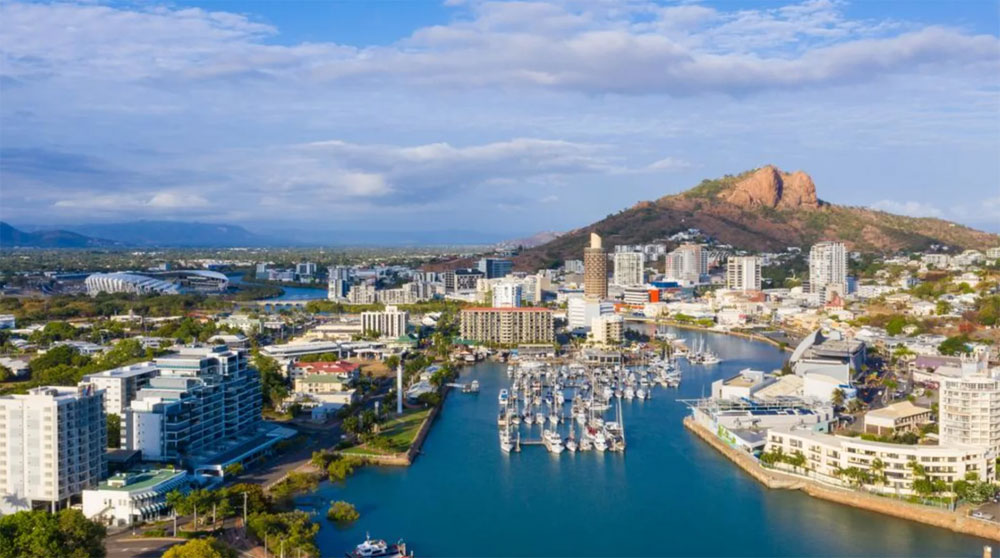
Townsville – Queensland
The Results of the August 2021 census were made public on 12th July 2022, and revealed that Australia has become a majority migrant nation, as the census data shows for the first time that more than 50 per cent of residents were born overseas or have an immigrant parent. Last year’s census counted nearly 25.5 million people, including 1 million new residents.
Australia’s 2022-23 Migration Program has been carefully designed to boost the social and economic outcomes that meet Australia’s needs. In fact, the migration programme was first launched in 1945 following the aftermath of World War 2. Given this long history, it is worth understanding how it works. The Australian Immigration Bulletin exists to help explain this in more detail.
As we’ve entered the 4th month of the year, join us for a look at the latest news and developments in the world of Australian Immigration!

We spoke with Karin, a skilled migrant and a nurse currently working for a private clinic.
Tell us about your work
I’m a nurse. It can be challenging, psychologically speaking. You deal with a lot of carers – you’re responsible for supervising them. So you need to make sure they’re doing the right thing, plus doing your own job. So that takes a lot mentally. It can be stressful.
Tell us about getting a job as a nurse
The two things that helped me get this job were being a ‘carer’ in my first job and also the connections.
Working as a carer first was extremely important to getting my next position as a nurse.
Also, knowing the people around me helped a lot. This includes building a good circle of friends. These connections helped me get both jobs.
What do you wish you knew
If you can’t express yourself in English, it’s really hard to prove that your skills are good. You can be a great nurse, but if you don’t communicate well in an interview, you’re not going to get there.
Really study English, study really hard. You’re never going to be 10 out of 10, we know that. But do your best as you build connections within your area of practice.
You want people to be sure of your skills because you have proof, and can tell them from your experience.
What tips can you share with migrants seeking nursing jobs in Australia?

The Department of Home Affairs will now accept a suitable skills assessment for the skilled migration applicant’s nominated occupation that has been obtained within the 60-day invitation period.
KEY POINTS
According to the update, applicants will be eligible to apply for visas under the general skilled migration category if they can get a skill assessment of their nominated occupation within 60 days from the date of receiving the invitation to apply for the visa.
What does this mean for applicants?
This is “great news” for applicants who previously would miss the opportunity to apply for the visa because their skills assessment validity expired before they received the invitation.
Previously, if you received the invite to lodge the application and your skills assessment validity expired before the day you received the invite, you would not be able to lodge the valid application.
The change now allows applicants to apply for a visa application even if their skills assessment has expired at the time of invitation.
For example, if you have a valid skills assessment as a chef at the time of lodging the expression of interest (EOI), but the day you receive the invite to apply for a 189 visa, your skills assessment is expired. In this case, you will now have 60 days to obtain a valid skills assessment and lodge the application within this time frame.
Who needs a skills assessment?
Applicants for the following points-tested GSM visas must have a suitable skills assessment for their nominated occupation:
To be invited to apply for a points-tested visa, applicants must have nominated an occupation that is on the relevant skilled occupation list for that visa subclass.
Applicants are required to provide evidence that they have a suitable skills assessment for their nominated occupation at the time of submitting the application.
Getting a skills assessment
Applicants are required to contact the relevant assessing authority for their nominated occupation.
“Check which skills assessing authority is the correct one for your nominated occupation and organise your skills assessment well before you apply for the visa,” the Department website states.
It is optimal to arrange a skills assessment before an applicant intends to submit their Expression of Interest (EOI) in SkillSelect.
Applicants must not rely on a skills assessment that was obtained after they were invited to apply because sometimes the relevant assessment authorities take up to 12 weeks or longer to assess depending on their nominated occupation.
And even if the advisory now allows applicants to obtain their skills assessment within the 60-day invitation period, there are chances some might miss the deadline.
Applicants must be aware that each assessing authority has its own procedures, timeframes and charges.
The assessment can take some time and can vary between different authorities. If applicants fail to get a positive assessment result, they cannot apply for a skilled migration visa.

National population data gets published with about a six-month delay. As of March 2023 we know the Australian population count as of September 30, 2022. Australia is now home to 26,124,814 people.
The big story is that Australia saw a record high net overseas migration intake in the quarter ending September.
Why did Australia just record the largest quarterly net migration intake in its national history? Australia saw a very low migration intake throughout the pandemic and there was quite a bit of pent-up demand for people moving to Australia. Many that couldn’t move Down Under during the border closures made the move eventually. Voila! Australia recorded record high overseas arrival numbers in the September 2022 quarter.
The main takeaway is that Australia remains a popular destination for international students and skilled workers alike. Brand Australia wasn’t permanently damaged during the pandemic.
When Australia grows its migration intake it obviously grows its population base. Natural increase describes the surplus number of births in Australia relative to the number of deaths. Birth figures
remained somewhat stable over the last 15 years as two trends cancelled each other out. While Australians on average had fewer kids (i.e. the birth rate fell), it is currently the super large Millennial cohort (born 1982-99) that is giving birth.
Whatever happened in the country over the last 20 years, about 75,000 babies were born every quarter. Because the number of deaths is at an all time high, natural-increase numbers are falling. About 53,000 people died during the September 2022 quarter. As more and more Baby Boomers (1946-63) enter the dying stage of the lifecycle, natural increase will contribute less and less to national population growth.
As a rule of thumb, only about a third of population growth is due to natural increase. Soon only a quarter of the national growth will come from natural increase, ensuring migration will reshape Australia in an even more impactful manner.
Population growth in the September 2022 quarter wasn’t large enough to qualify as record breaking. That said, it is very much possible that the next few quarters will see Australia grow by record numbers.
The high migration approach to managing Australia is Australia’s best bet to slow the massive impact that the ageing of the population has on our economy and workforce.
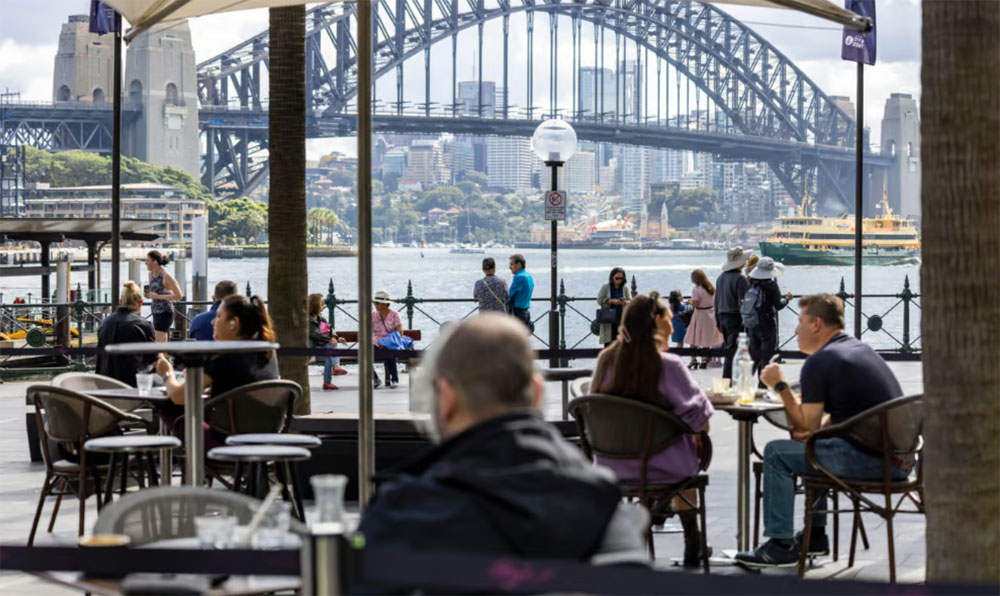
‘We are the new Love Island. If you’re a single Brit, come on out because you might not be single for long.’
That’s what Paul Papalia, the Minister of Police for Western Australia, told The Times in his sales pitch to attract British police down under.
London’s Evening Standard reported that ‘leaflets showing smiling officers in scuba-diving gear and sandy beaches’ were placed on chairs at Papalia’s recruitment meetings, together with packs of Australian Tim Tams.
At a practical level, the vastly superior pay and conditions in Western Australia may prove the greatest attraction to English police officers. According to The Times, recruits with at least three years’ experience will start in WA ‘on a basic salary of about £50,000 compared with £30,000 for a constable with five years’ experience in the UK’.
It’s no wonder that over 800 police officers have already responded to WA’s pitch.
And it’s not just the police department that Papalia is recruiting for. He went to the UK and Ireland in search of doctors, nurses, teachers, electricians, and engineers. He had over 30,000 vacancies to fill.
His prospects are looking pretty good. The Times reported that the pay in WA across those occupations is at least 50% higher than in the UK and in some cases more than double.
That’s before you factor in the lifestyle advantages.
It’s clear that the international competition for workers, particularly skilled workers, is becoming more intense. According to a recent speech at the Australian Financial Review Workforce Summit, the Australian government is acutely aware that it needs to lift its game if the country is to remain attractive to skilled immigrants from around the world.
The speech was delivered by Clare O’Neil, the Minister for Home Affairs.
It is now expected that the projections in last year’s budget for net migration in the year to 30 June 2023 will be exceeded by a significant margin.
The federal government has shown itself willing to cooperate with state governments to assist attracting foreign workers. For example, as part of Western Australia’s current recruitment drive in the UK, Canberra did a deal enabling British police officers to get permanent resident status immediately and to apply for citizenship after four years.
That’s the type of practical action required to help ease current labour shortages across the Australian economy. The government seems determined to facilitate this.
The other key issue of course is remuneration levels. Australian pay is emerging as a major draw card, at least in the market for British migrants.
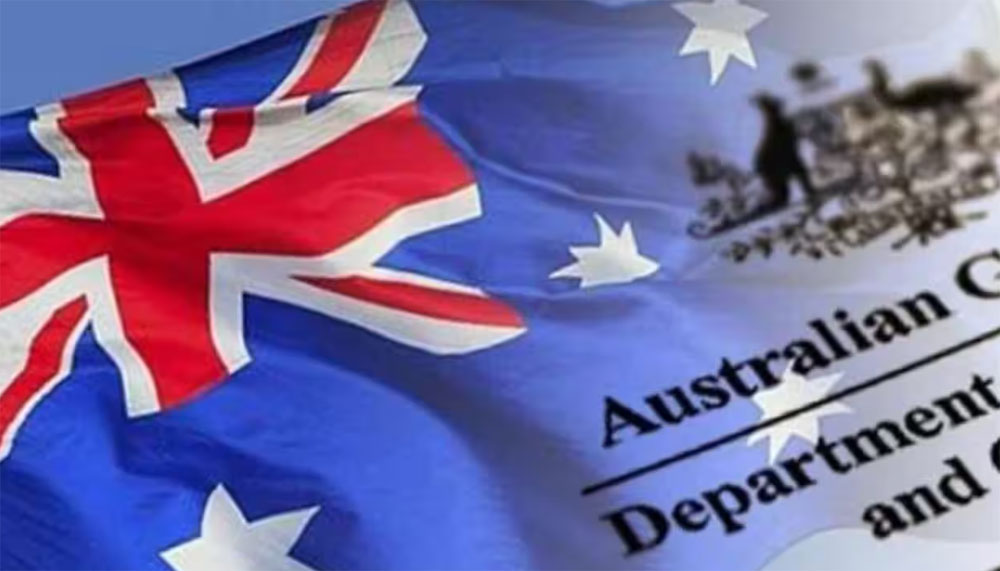
While there may be various reasons for Australian citizenship refusal, depending on your individual case, we discuss the most common reasons for refusal of Australian citizenship.
What are the reasons for refusal of Australian citizenship? Perhaps you have been an Australian permanent resident for quite some time now and are thinking of applying for citizenship. The Australian government and immigration minister set up many avenues for applicants to become citizens of the country.
There are many benefits of being an Australian citizen. You can have your own passport and travel in and out of Australia as you please, you can vote, you can have access to student loans and medical facilities, and much more.
However, you may not be able to enjoy these benefits if DHA refuses your application for Australian citizenship. It is important to know the requirements as well as grounds for refusal before lodging an Australian citizenship application.
The Australian Citizenship Act 2007 governs the rules for Australian citizenship. Citizenship by conferral is the most common way to become an Australian citizen.
While there may be various reasons for Australian citizenship refusal, depending on your individual case, we discuss the most common reasons for refusal of Australian citizenship.
Failure to Prove Identity
One of the main reasons for refusal of Australian citizenship is the failure to prove your identity. There may be failure on identity grounds, meaning there is no satisfaction of proven identity. The verification of your identity is one of the most important elements in your application.
As part of the process, the applicant would need to provide a photograph and a completed identity declaration signed by a designated person, who should be an existing Australian citizen.
The process of an Australian citizenship application involves thorough checking, so it is best to ensure that all your documents are genuine and that they contain correct information. The analysers evaluate the entire document; not just your photograph, but also your address details, spelling of names, and all other important information.
You must note that issues arise when a person has previously provided fake documents or was involved in fraud. Hence, it is important to provide genuine documents containing true information.
Failure to Meet Residency Requirements
Another factor of the reasons for refusal of Australian citizenship is that the applicant does not meet the residency requirements. An Australian permanent resident is eligible to apply for citizenship after 4 years.
You must also be in Australia (not overseas) when making a citizenship application and genuinely want to make Australia your home and continue to build a life in the country.
Other ways to be eligible include:
You must note that the residency requirement requires that the applicant must have lived in Australia lawfully, meaning on a temporary or permanent visa. Hence, if you have had a visa cancelled or expired, your 4-year count would start again.
Furthermore, DHA may refuse an Australian citizenship application if you cannot prove your intention to build a life in Australia or maintain a close and continuing association to Australia. If you have a significant business or family outside of Australia that requires you to spend a huge amount of time overseas, it may affect your Australian citizenship application.
Failure to Meet Character Requirements
Failure on character grounds is another reason for refusal of Australian citizenship. Your Australian citizenship application can be refused if you have a criminal record as a result of a criminal offence. You must be of “good character”, which involves the moral qualities of a person.
Good character is often assumed in the absence of criminal convictions or evidence of past misbehavior. An applicant may fail the character requirements due to the applicant’s criminal history. Ongoing court cases and charges or previous convictions may affect your Australian citizenship application.
You must disclose everything when applying for Australian citizenship. Not disclosing prior convictions can lead to a refusal of your application.
It is worthy to note that a person may also not be of “good character” where it has been proven that they lied to the Department of Home Affairs in the course of making a prior visa application or in the process of their citizenship application.
However, a person can prove that, even with past misbehavior, they are still of good character. Evidence of rehabilitation, employment, charity work, caring for relatives, among other good works are factors that can be considered. If the good works outweigh the past misbehavior, and sufficient time has passed since the last instance of misconduct, the applicant can still satisfy the character requirements.
Failing the Citizenship Test
Failing the citizenship test is another the common reason for refusal of Australian citizenship. An Australian Citizenship application can be refused if the applicant failed the citizenship test. A score of 75% is needed to pass the citizenship test. Hence, it is highly advisable to study the official materials that are available for applicants.
Prior Australian Citizenship
Another reason for refusal of Australian citizenship is if there was a prior Australian citizenship. Your application may be refused if you have renounced Australian citizenship within the past year and in the same timeframe reapplied for citizenship. In this instance, the possibility of the refusal of the application is high.
Failing to Show You Were the Child of an Australian Citizen at Birth (by Descent)
A citizenship by descent is applied for if you were born outside Australia and one or both of your parents were Australian citizens when you were born. Providing evidence that at least one of your parents was an Australian Citizen on the day you were born is crucial. You must show evidence linking you and your parents, such as a birth certificate or citizenship certificates. If you fail to provide these, DHA can deny your Australian citizen application.

If you are interested in applying for a general skilled migration visa to Australia, it is important to have a good understanding of the skilled visa options and how the migration points test works, so that you can maximise your chances of being eligible to apply for a skilled visa.
A general skilled migration visa is an option available to skilled workers who are seeking to qualify for a skilled visa independently, or under a state or family sponsorship. It is an alternative to an employer sponsored visa.
One of the key criteria to qualify for a general skilled migration visa is the points test (a criterion that does not apply to employer sponsored visas). This is often the most challenging aspect for prospective skilled visa applicants to overcome when seeking an invitation to apply for the relevant skilled visa.
If you are considering applying for a general skilled migration program visa, an important concept to understand is the Expression Of Interest (EOI).
If you are considering applying for a general skilled migration visa, it is important to be aware that for certain visas in this visa class, you will first be required to lodge an EOI with the Department of Home Affairs (the Department) through Skill Select. The EOI is not a visa application, but rather, it is the process by which you can express your interest in applying for the relevant skilled visa (It’s important to note, that there is NO fee to submit an EOI).
This requirement applies to the following skilled visa subclasses:
Let’s take a brief look at each of these visas below:
The ‘subclass 189’ is a federal sponsored visa that grants automatic permanent residence in Australia. It is subject to nil visa conditions or obligations. For this reason, it is often considered to be the most flexible of the skilled visa options available.
A subclass 189 points-based visa allows you to live and work in any state or territory permanently.
The ‘subclass 190’ is a state/ territory sponsored permanent residence visa. It is another points-based visa for which invitations are issued throughout each month by individual states and territories. One of the benefits of applying for state nomination is that you will be granted an additional 5 points.
An important aspect to consider, which does not apply to the subclass 189 visa is that there is an added step in the application process. In this case, you must also apply for nomination approval to a state or territory government. Only upon receipt of an invitation from the relevant state or territory to which you apply can you then apply to the Department for the visa itself.
Your obligations as a subclass 190 visa holder are that you must commit to your nominating jurisdiction’s obligations and commit to residing in your nominating State or Territory for two years from visa grant.
The ‘subclass 491’ is also a points-based state/ territory (or family) sponsored visa. It is a regional visa with a term of five years. The Department issues invitations for family sponsored EOI applications only (in invitation rounds). Invitations for state sponsorship are issued by individual states and territories throughout each month. This will grant you an additional 15 points for the nomination.
Being a provisional visa, this means it provides a pathway to permanent residence in Australia with the Subclass 191 Permanent Residence (Skilled Regional) visa, subject to meeting specified requirements.
Be mindful that as a subclass 491 visa holder, you must abide by visa condition 8579, which requires you to live, work and study in a designated regional area of Australia. For migration purposes, most locations of Australia outside of major cities (Sydney, Melbourne, Brisbane, Perth, etc.) are classed as regional areas.
If your EOI is successful, you will receive an invitation to apply for the visa, as specified in the invitation letter. This then enables you to proceed with lodgment of your visa application (provided you meet all other visa lodgment and visa grant requirements).
Please note, the below State and Territory program updates is a general overview only. It does not take into account any of your personal circumstances. You must check the State/Territory information carefully to ensure you can meet all the requirements for nomination.
Australia is currently facing a shortage of skilled migrants to fill workforce demands. In response, states and territories have been easing the conditions of their visa programs to help attract skilled workers from overseas.
Below is the monthly update for some of the State and Territory opportunities available.
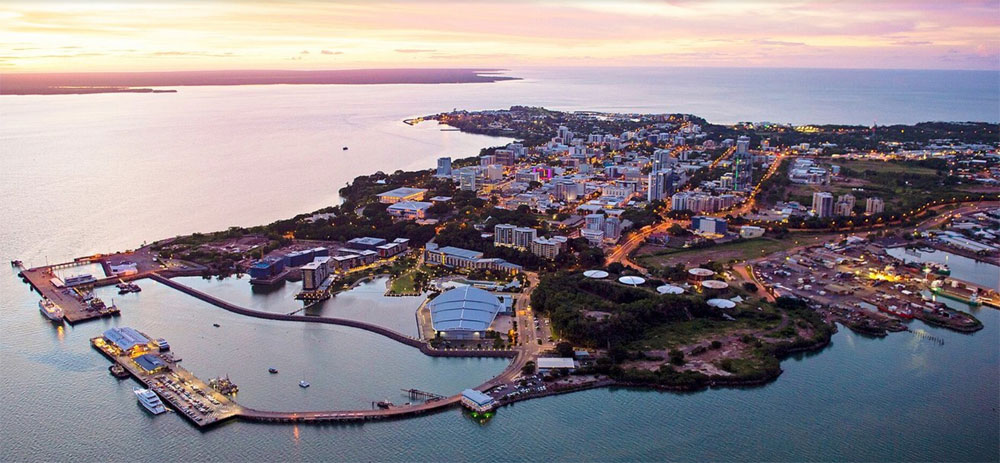
Program Status Update
People residing offshore are now eligible to be considered for Northern Territory (NT) nomination. Invitations to apply for Northern Territory nomination will be via the ranking system.
The ‘Northern Territory Offshore Migration Occupation List’ identifies the occupations in current demand in the Northern Territory. This List is important if you want to apply for Northern Territory nomination for either a:
The ‘Northern Territory Offshore Migration Occupation List’ is only applicable for those applying for NT nomination from outside Australia, under the Priority Occupation stream.
Please note: The Northern Territory government has advised that offshore applicants will generally only be offered a Northern Territory nomination for a subclass 491 visa. Subclass 190 nominations will only be offered in exceptional circumstances, such as cases where the applicant has strong connections to the NT.
The NT advises eligible applicants to apply as soon as they meet the eligibility criteria. To receive a nomination from the NT Government, you must:
Before submitting an EOI for The Northern Territory, applicants should check that they meet all eligibility requirements.
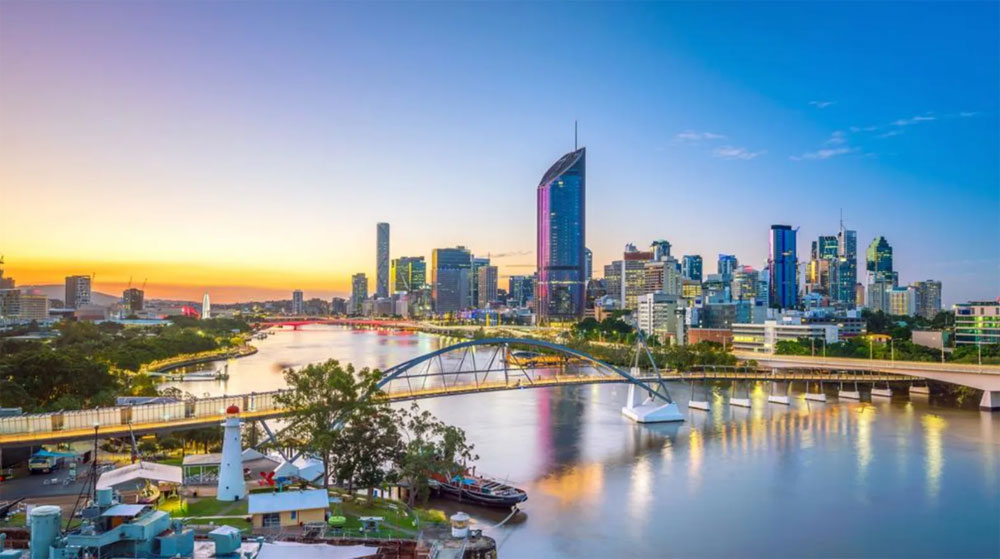
Program Status Update
To manage Queensland’s COVID recovery response, applicants currently residing offshore are now able to apply.
Depending on your occupation and situation, there are two state nomination options available for skilled migrants through Queensland.
For Queensland state nomination, prospective applicants must meet the Department of Home Affairs requirements, state-specific occupation requirements and have skills in an occupation that is available on the Queensland Skilled Occupation List.
You may undertake employment once onshore in Queensland through:
Offshore applicants meeting the minimum published requirements can now lodge a Registration of Interest (ROI).
Migration Queensland, the state government agency responsible for skilled visa nomination, has stated they will only accept a brand new EOI submitted on Skillselect from 16 August 2022. Updating existing EOI’s submitted prior to 16 August 2022 will not be invited.
The agency also requests all applicants to ensure they have carefully read and understood the new criteria relevant to their stream or pathway, and that they meet the criteria before submitting an Expression of Interest (EOI).
The 2022-23 Skilled Migration Program will be open to both onshore and offshore applicants and provide pathways for skilled workers, graduates, and small business owners.
Before submitting an EOI for Queensland, applicants should check that they meet all eligibility requirements.
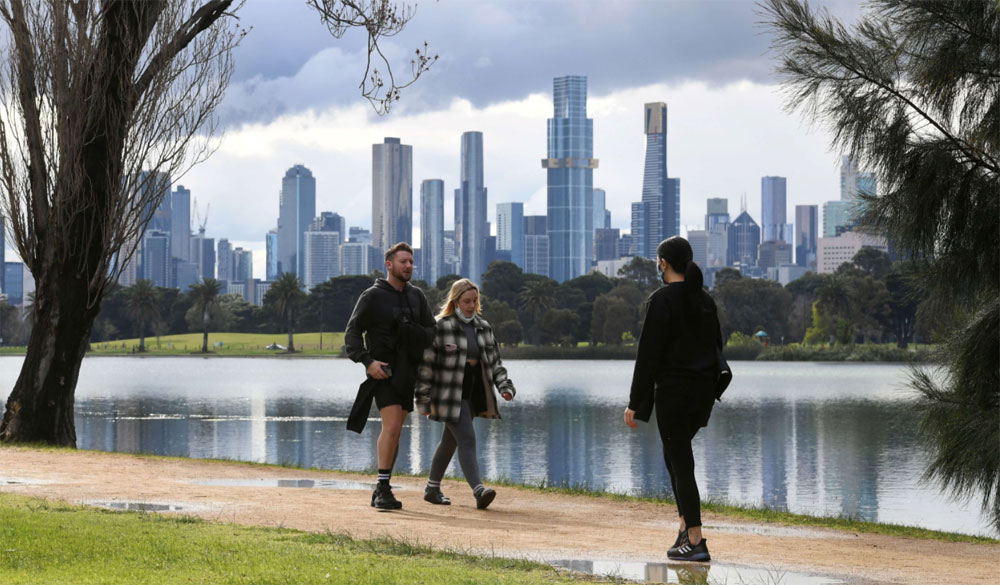
Program Status Update
Open to offshore applicants, the program provides skilled migrants with a pathway to permanent residency in Victoria. The skills that successful applicants bring to Victoria benefits employers and the broader Victorian economy.
The program provides two visa pathways.
The Skilled Nominated visa (subclass 190) is a permanent visa for skilled migrants to live and work anywhere in Victoria. The Skilled Work Regional (Provisional) visa (subclass 491) is for skilled migrants to live and work in regional Victoria and provides a pathway to permanent residency through the Permanent Residence (Skilled Regional) visa (subclass 191).
As with previous years, applicants will first need to submit a Registration of Interest (ROI) and then be selected on competitive merit to apply for visa nomination.
Both onshore and offshore applicants are eligible to submit a Registration of Interest (ROI) for both the subclass 190 and subclass 491 visas.
This is a significant change from the 2021-22 Skilled Migration Program, which did not allow applications from individuals overseas. Additionally, the new program is a great opportunity for applicants who work in a variety of occupations, particularly since the 2021-22 program was previously aimed at applicants in science, technology, engineering, mathematics and medicine (STEMM).
If you submitted a ROI during the 2021-22 program, you must submit a new ROI to be selected to apply for the 2022-23 program.
Your ROI will remain in the system for selection until it is withdrawn, selected or the program year ends. The final day to submit a ROI is Friday, 5 May 2023.
Before submitting an ROI for Victoria, applicants should check that they meet all eligibility requirements.

Program Status Update
People residing offshore are now eligible to be considered for Western Australia (WA) State nomination. Invitations to apply for WA State nomination will be via the ranking system.
The Western Australian Skilled Migration Occupation List identifies the occupations in current demand in Western Australia. This List is important if you want to apply for Western Australia nomination for either a:
Western Australia has increased occupations eligible for skilled migration by roughly 60 per cent for the 2022-23 program. New occupations have been added to both the Western Australian Skilled Migration Occupation List Schedule 1 (WASMOL Schedule 1) as well as the Western Australian Skilled Migration Occupation List Schedule 2 (WASMOL Schedule 2). In total, more than 100 occupations were added, including 46 in the health care sector, bringing the total to 276 occupations.
Some examples of the newly added jobs include:
For more information, consult the combined list of eligible occupations.
From 1 July 2022, the WA Government is also temporarily waiving the $200 application fee. Additionally, applicants who apply after this date will no longer need to provide proof of sufficient funds for WA State nomination.
Under the Western Australia Skilled Migration Program 2022-23, the English language requirement has also been reduced for applicants at the Manager and Professional occupation level. Applicants at this level will only need to demonstrate a “competent” proficiency in English (which is a minimum ‘IELTS score of 6’ for each of the 4 categories).
Before submitting an EOI for Western Australia, applicants should check that they meet all eligibility requirements.
With world-class education, healthy job opportunities and strong public health management, WA is a safe place to live, work and study.
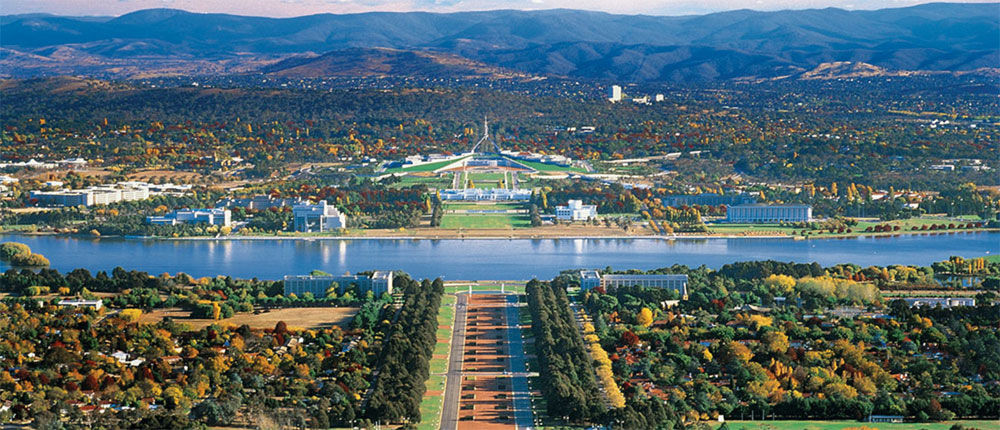
Program Status Update
The ACT Critical Skills List identifies the occupations in current demand in the ACT. This List is important if you want to apply for ACT nomination for either a:
The ACT Government will update this list every four months to make sure that the ACT Skilled Migration Program adapts and responds to the evolving critical skills needs of the ACT economy.
The Canberra Matrix is weighted to ensure that applicants who will make a positive economic contribution to the Territory and/or have demonstrated a genuine commitment to the ACT are more likely to be ranked and invited to apply for ACT nomination.
*ACT nomination does not guarantee a migration outcome. You must still meet the Department of Home Affairs criteria.
Every month, a certain number of nomination invitations are available (prorated on the annual allocation) to those working in the highest ranked Matrix in each occupation.
You can view the ACT’s most in-demand skills for skilled migration by consulting the ACT Critical Skills List.
Before submitting an EOI for The Australian Capital Territory, applicants should check that they meet all eligibility requirements.
Once you’ve submitted a valid Department of Home Affairs SkillSelect EOI, follow the ACT Government Process to apply for ACT nomination.
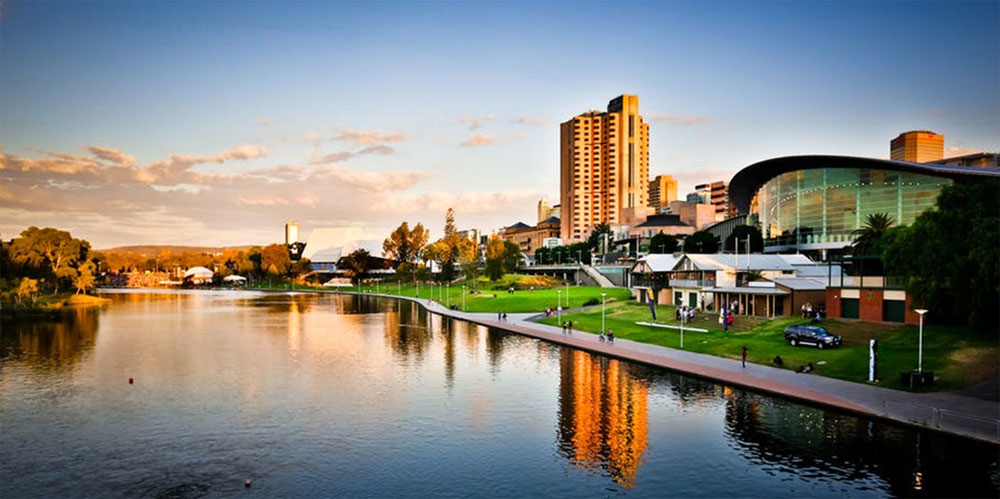
Program Status Update
To manage South Australia’s COVID recovery response, applicants currently residing offshore are able to apply.
Depending on your occupation and situation, there are two state nomination options available for skilled migrants through South Australia.
For South Australian state nomination, prospective applicants must meet the Department of Home Affairs requirements, state-specific occupation requirements and have skills in an occupation that is available on the South Australian Skilled Occupation List. Offshore applicants meeting the minimum published requirements can now lodge an Expression of Interest (EOI).
There is an enormous range of occupations on South Australia’s Skilled Migration Occupation List in a range of industries – search for your occupation here.
South Australia will increase its nominations of offshore skilled migrants in 2022-23. This is in order to make entry to the South Australian labour market faster, due to urgent skills shortages.
To do this, South Australia will select offshore applicants to apply for state nomination from those who have submitted an Expression of Interest (EOI) through SkillSelect. Offshore applicants will not need to lodge a Registration of Interest (ROI) for this year’s program. South Australia will be nominating offshore applicants from over 470 occupations on South Australia’s Skilled Migration Occupation List. To be eligible, ensure all the information in your SkillSelect EOI is up to date and you have selected South Australia as your first preferred state or territory to move to in Australia.
South Australia will be assessing candidates on merit by the following factors, within their nominated occupation:
Before submitting an EOI for South Australia, applicants should check that they meet all eligibility requirements.
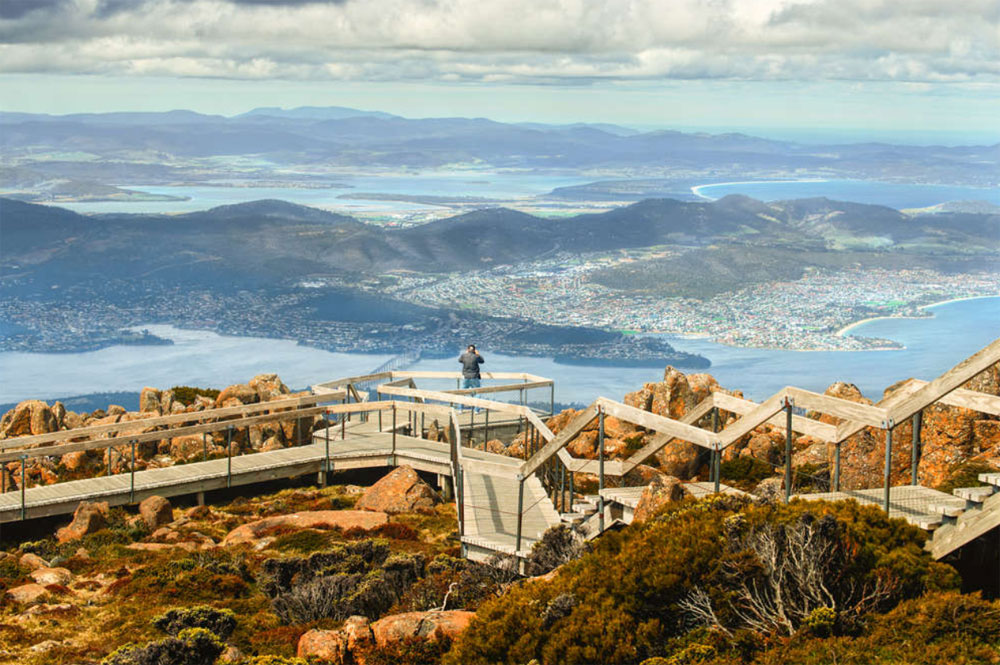
Program Status Update
Working in Tasmania
The two state nomination options available for skilled migrants through Tasmania are:
The Tasmanian State Nomination Skilled Migration Program supports Tasmanian businesses and increases the state’s working age population. It does this by attracting and retaining migrants with skills genuinely in need by employers, or with the capacity to settle in Tasmania through skilled employment in the long-term, and business activities that will increase employment opportunities.
Tasmania’s skilled migration program is for people wanting to move to the state who have skills that Tasmania need. Skilled migrants are attracted to Tasmania because of the state’s enviable lifestyle, career opportunities, affordable housing, reputable schools and a globally recognised university.
The new Migration Tasmania Application Gateway is now open!
The new Migration Tasmania Application Gateway is now open for registrations of interest (ROI) and applications for skilled visa nomination from Tasmania.
Anyone seeking Tasmanian nomination for a Subclass 190 Skilled Nominated Visa or Subclass 491 Skilled Work Regional Visa must now first register in the Migration Tasmania Application Gateway .
Before submitting an ROI for Tasmania, applicants should check that they meet all eligibility requirements for either;
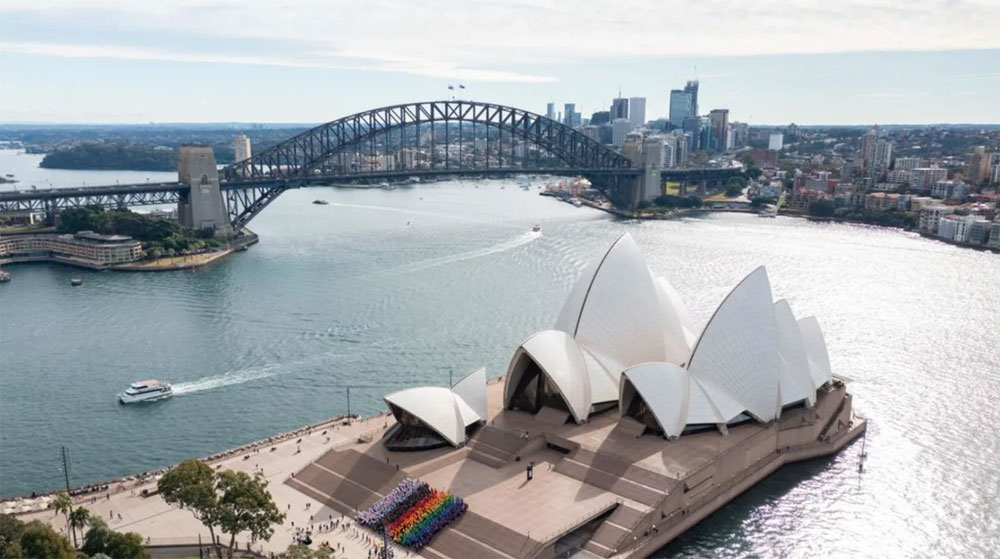
Program Status Update
The New South Wales government has invited applications from offshore migrants under the following nomination streams:
The NSW State Government announced that offshore applicants skilled in certain ANZSCO unit groups are still eligible for NSW nomination.
*Please note: Invitation rounds occur frequently throughout the financial year with no set date.
NSW invites and nominates SkillSelect EOIs at the ANZSCO unit group level. To be eligible for NSW nomination (for either Subclass 190 or Subclass 491) you must be skilled in an occupation that both:
It is important to note that not all occupations within ANZSCO unit groups are eligible for the respective visa. It is the responsibility of the prospective migrant to ensure their occupation is eligible for the visa before obtaining a skills assessment.
For the 2022-23 financial year, NSW have introduced a new requirement regarding your Skillselect EOI. To be eligible for NSW nomination, your Skillselect EOI must be for ONE visa and for NSW only.
This means that if your Skillselect EOI has multiple visas and/or multiple states selected (this includes selecting ‘ANY’), your Skillselect EOI will not be considered for NSW nomination.
The skills lists for 2022-23 are available on the Investment NSW website. Additional ANZSCO unit groups will not be added this financial year, however, the skills lists are reviewed annually.
For a further explanation of how the skills list works, see the Common questions about skilled visas page on the NSW Government website.
Before submitting an EOI for New South Wales, applicants should check that they meet all eligibility requirements for either;
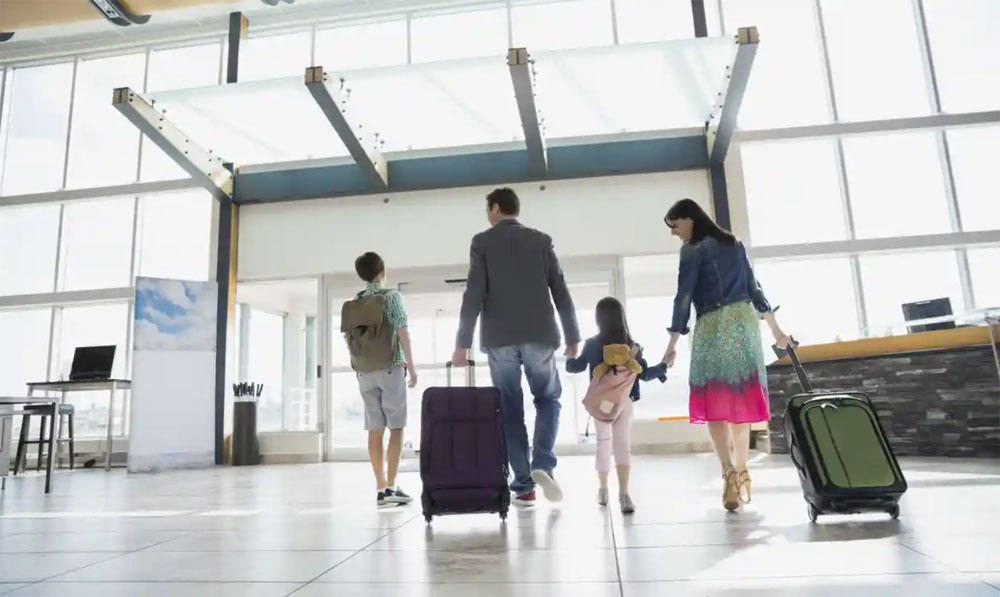
Australia is likely to avoid a recession due to the strong rebound of overseas migration while borrowers can expect the Reserve Bank or Australia (RBA) to start cutting interest rates by the end of the year, according to the chief economist of the central borrowing and financing authority of New South Wales TCorp.
“The prospects for Australians to have an (economic) soft landing is great, and one of the key reasons for that is the return of overseas migration. Particularly over the last six months, which has rebounded very strongly,” TCorp’s chief economist Brian Redican said.
Overseas migrants grew by 171,000 people in the 2022 financial year, a significant jump from the net loss of 85,000 people the year before according to data from the Australia Bureau of Statistics. While the RBA is expected to increase rates by another two to three times this year with significant impact on the housing market, building construction and consumer spending, “given that tailwind from the return of overseas migrants, that’s the main reason why we’re not forecasting recession for Australia”, he says.
Wage outlook key for RBA
“[The RBA] tightening cycle has to be strong enough to prevent wages growth from leading up, whereas in the US, they have to weaken the labour market sufficiently to get wages growth down. So I think the US Fed has got a much harder job compared to the RBA,” he says, explaining the rationale for a potential rate cut by the RBA later this year. TCorp is forecasting wage growth in Australia to hit 3.5 per cent. “If they don’t see a rapid acceleration of wages growth by the end of the year and housing is weaker and consumer spending is weaker, then they do actually have the opportunity to cut interest rates.”

To solve the multiple skill shortages for good, Australia needs to inspire a stronger connection with industries.
Let’s observe the profession of engineer as an example.
Take a look around you and you will see something created by an engineer. From the energy that powers your home, to the car you drive and the device you are reading this on, the handiwork of engineers is all around us.
However, Australia is currently experiencing an acute shortage of engineers. This is bad news considering that engineers are considered the drivers of advanced economies.
A 2022 report by Engineers Australia revealed that Australia is experiencing a scarcity of engineers in nearly all disciplines of the profession.
The shortage of engineers in Australia has been a problem for decades, so what’s different this time and what can be done to address it?
SHRINKING SUPPLY CANNOT MEET GROWING DEMAND
The first difference is the vast scale of Australia’s engineering shortage. Our country currently has insufficient numbers of engineers to meet our current demand in all disciplines, except the biomedical fields.
The situation can be labelled a ‘skills shortage’ under the National Skills Commission definition, meaning entire industries could be operating at below-optimal levels because several sectors of the economy rely on engineering talent.
The second difference is the increasing demand for engineers. This is a result of the relentless infiltration of technology into our daily lives, a burgeoning infrastructure sector, greater awareness of climate change and the resulting shift to cleaner, more sustainable energy – and much more.
In the coming years, we will need more engineers than ever. Engineers Australia estimates the future shortfall to be between 50,000 and 100,000 engineers, yet we have an insufficient number of engineers to satisfy even the current demand.
Promoting engineering as a prestigious, well-paying profession that provides an avenue for solving some of society’s most pressing problems would produce a new breed of migrant and Australian-born engineers who are more likely to remain in the profession and help to safeguard our economic future.

A massive five-year review of Australia’s economic policies says the nation should overhaul its education, immigration, climate and workplace laws, including expanding student loan schemes, altering certain visa classes and expanding the government’s signature climate policy.
Key Points:
The Productivity Commission, which is the Commonwealth’s main advisory body on the economy, was tasked by the government to examine at five-year intervals how to improve productivity and lift worker wages and leisure time.
It said if Australian productivity matched similar nations, the working week could be four hours shorter without any loss of income for workers.
One of its most significant recommendations is that the government’s proposed “safeguard mechanism”, which would force the nation’s 200 biggest polluters to lower their emissions by 4.9 per cent each year, should be expanded to become the central program to reduce emissions.
Their proposal to reduce the threshold for inclusion would more than double the number of facilities captured and a wider net across which industries would be included.
The commission said addressing climate change in a cost-effective way would be one of the most important drivers for the Australian economy into the future.
Altering visa classes and free uni lectures among PC laundry list
Among more than 70 recommendations, the Productivity Commission (PC) recommended major changes to the education sector, such as reviewing price setting for degrees, expanding who can access study loans and requiring universities to provide all lectures online and for free.
In immigration, the report recommends shifting the employment visa scheme from list-based restrictions to instead set a minimum pay threshold that rises with age, longer temporary visa durations but with tougher pathways to permanent residency and changes that would allow employer-sponsored workers to switch employers more easily, allowing for temporary unemployment.
The commission also advised it was time to move away from taxes on petrol towards a nationwide road user charge, including charges for congested roads, as electric cars became more common.
The commission warned that due to the shocks of COVID-19, war, inflation and geopolitical tension, the task of improving productivity faced new challenges.
“Australia can navigate these challenges, but should do so with a clear-eyed view of our distinct economic structure and comparative advantages. Openness could look different, but it will be just as important,” the reviewers wrote.
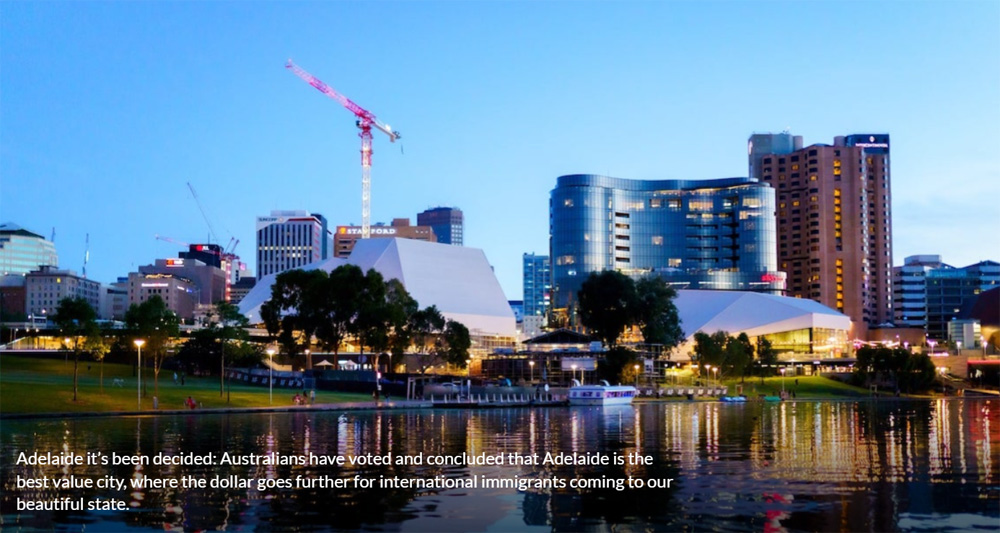
Around this time of year there’s a familiar claim – that Australia is one of the most successful multicultural nations in the world. But what city is best value to settle in?
Adelaide, it’s been decided: Australians have voted and concluded that Adelaide is the best value city, where the dollar goes further for international immigrants.
Immigration to Australia has published new research from their recent survey that reveals which capital city Australian residents believe is best for international immigrants moving to Australia this year.
The survey asked residents to rank the capital cities based on 8 key factors of habitability, with some surprising winners coming out on top.
These eight factors include welcoming to residents, potential for business success, family-friendly, value, lifestyle, well-paying jobs, climate, and safety where responders could choose from the capital cities in each state/territory.
The survey commissioned by Immigration to Australia reveals the top cities Australians believe new immigrants should consider when making their move.
Australia’s most world-famous cities, Sydney and Melbourne, which attract most tourism and immigrants to the country, ranked top at most of the categories.
Melbourne was ranked as the most welcoming city for immigrants, and both Sydney and Melbourne took equal first place as the best cities to start a business, despite their outrageous cost of living expenses!
Sydney was ranked as the top city for well-paying jobs and Melbourne was the top family-friendly city.
Adelaide, on the other hand, has taken the win for the best valued city in the country, where 20 percent of responders took into consideration the infrastructure, opportunities and other factors associated with the monetary value offered in a city.
Despite your thoughts of a price increase in necessities like a Farmers Union Ice Coffee from your local servo, or a Balfour’s Frog Cake replica from the supermarket, Adelaide is still the go to city for cheaper living for other (arguably less) important things like the use of public transport.
Overall, Adelaide settled toward the middle for most categories, especially in terms of being the most family friendly city, being the safest and having the best climate!
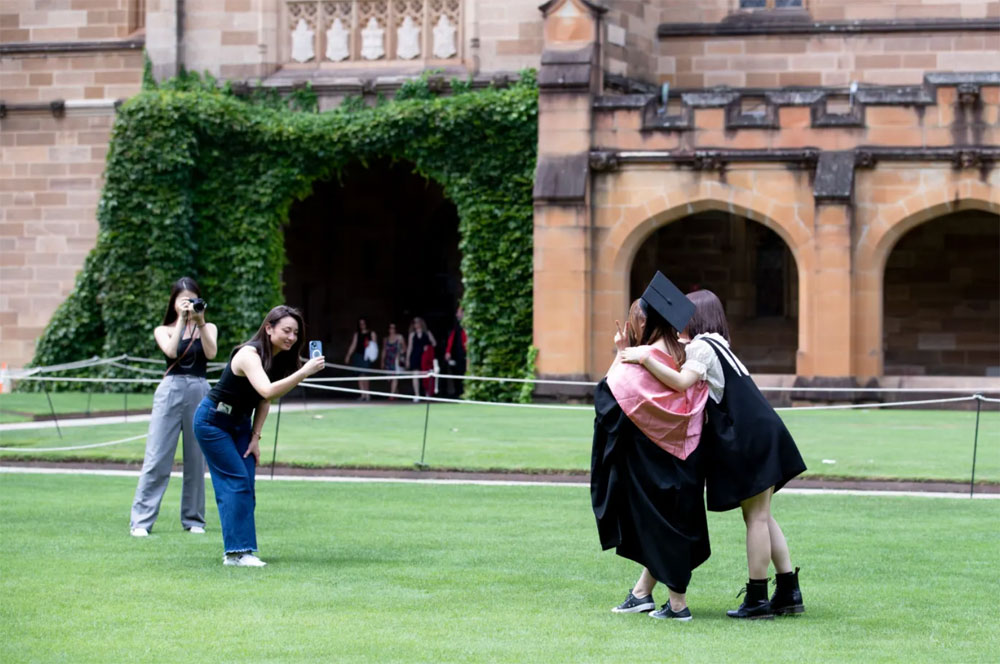
The Australian Federal Government has announced that as of 1 July 2023 international higher education graduates with eligible qualifications will be granted an additional two years of post-study work rights.
Following consideration of the Post-Study Work Rights Working Group Report, the Minister for Home Affairs Clare O’Neil announced that this two-year extension of post-study work rights is available for international graduates with select degrees that are in areas of verified skill shortage, such as health, engineering, IT, and education among others.
The extension is in addition to the existing additional one to two years of work rights for eligible students who study, live and work in regional areas.
Post-study work rights for eligible graduates will be increased from:
Increase to international students working hours
In addition, as of 1 July 2023, all international students will be permitted to work up to 48 hours per fortnight, an increase from the 40 hours per fortnight cap (temporarily relaxed), which will be reinstated on 1 July 2023.
Eligibility for Temporary Graduate (subclass 485) Visa Extension
You will be eligible for this extension if:
In addition, one of the following must also apply:
If your Temporary Graduate visa (Post-Study Work stream) expires before 1 July 2023
If your Temporary Graduate visa (Post-Study Work stream) expires before 1 July 2023 and you do not hold an eligible qualification, you cannot apply for this extension.
In this instance, you will be granted a two-year Temporary Activity Australian Government Endorsed Events (COVID-19 Pandemic Event) visa (subclass 408). To be eligible for this 2-year Subclass 408 visa, you must be working in Australia or have an offer of employment.
Importantly the application for this visa must be made before the Temporary Graduate visa (Post-Study Work stream) expires or 28 days after its expiry.
You are also eligible for a two-year Temporary Activity Australian Government Endorsed Events (COVID- 19 Pandemic event) visa (subclass 408) if:
It is important to also note that if you apply for a SC408 Pandemic Event visa, you will not be eligible to then apply separately for an extended SC485 visa. As such, you should seek migration advice before proceeding with an application.
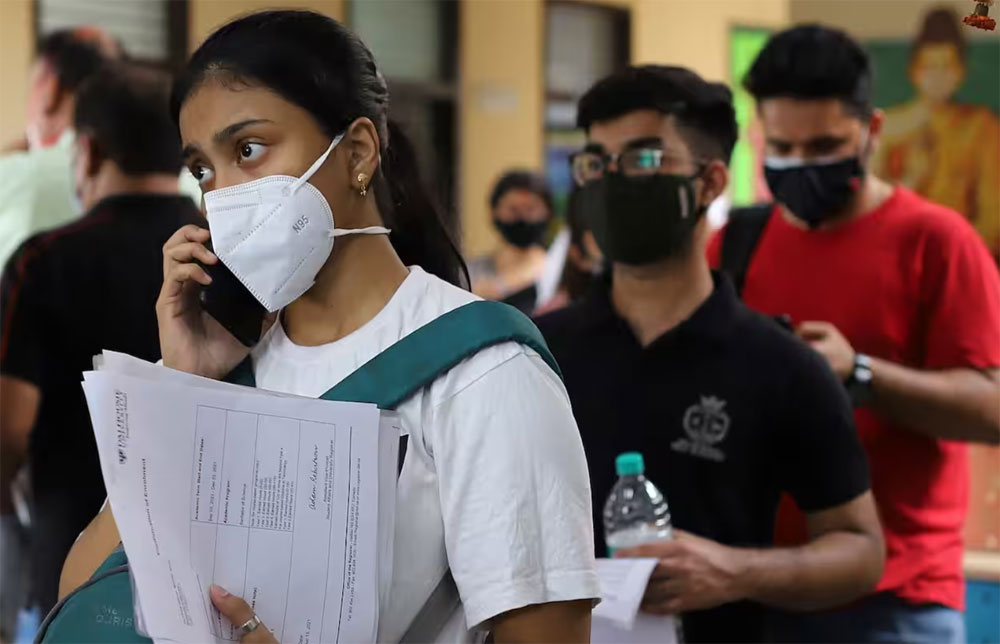
Is your Australian student visa expiring soon?
If you are an international student studying in Australia, you might wonder: “Are there other ways to extend my student visa?”
The truth is it’s not possible. Unlike the UK or the US, extending your Australian student visa isn’t an option.
Luckily, it’s not the end of the road — especially if you are graduating soon and are struggling to decide whether to continue your postgraduate studies.
Though renewing or extending your Australian student visa isn’t possible, there’s another way. The simple answer is to apply for a new one.
In other words, if you want to continue studying in Australia, you must go through the whole student visa application process.
Do note that there are certain requirements when applying for a new student visa. Other ways to stay in Australia post-graduation includes applying for the Temporary Graduate Visa.
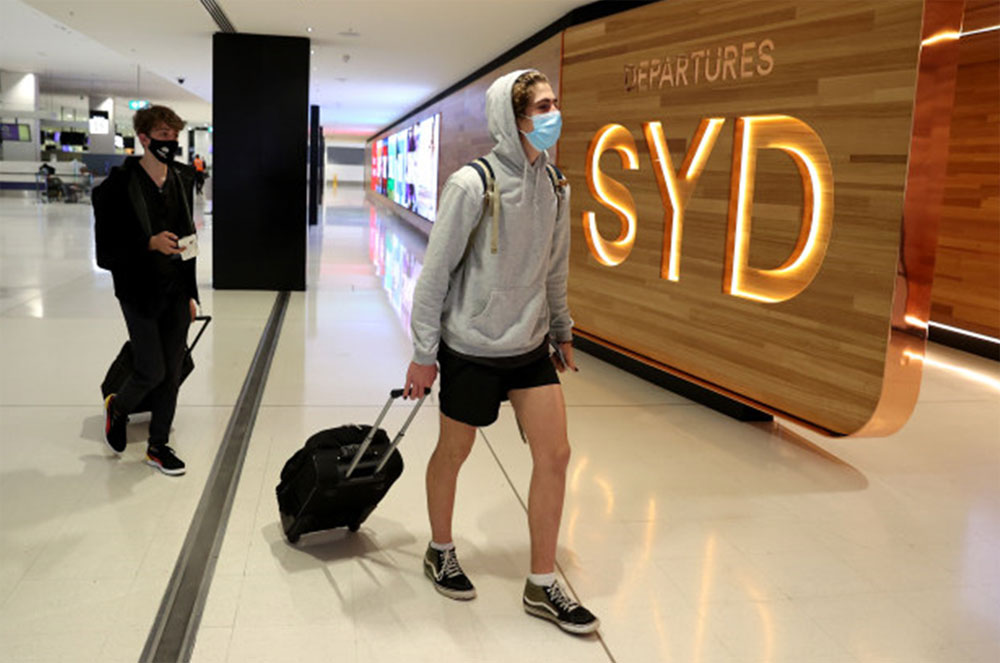
As mentioned, extending or renewing your Australian student visa is not an option. You can apply for a new one if your old one expires before you complete your course.
To avoid last-minute surprises, apply for a new visa at least three to four months before your visa expires.
Here are a few other reasons to apply for extending your Australian student visa:
If you are applying from inside Australia, you’ll be granted a Bridging Visa A (BVA) , allowing you to legally reside in Australia while your visa is being processed. Your new visa will come into effect once your current student visa expires.
Those applying from outside Australia will have to wait until their student visa application is approved before re-entering Australia.

You might ask: “What do I do when my student visa expires and I am finishing my course?”
Instead of extending your Australian student visa, you can opt to stay and work in Australia once you’ve graduated.
For this, you’ll need to apply for a Temporary Graduate Visa (subclass 485), which costs 1,730 Australian dollars.
The Temporary Graduate Visa allows graduates to work in the country for up to 18 months. The visa is mainly catered to recent graduates with skills and qualifications relevant to specific occupations in Australia, such as agricultural engineer, carpenter and cardiologist.
It’s best to check if you’re eligible to apply for this visa. Here are some of the requirements:

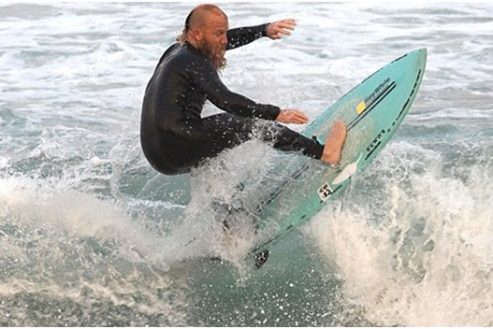
Blake Johnston has broken the world record for the longest surf session ever held, with a 40 hour surf to raise money for a mental health charity. Cronulla, NSW. March 2023


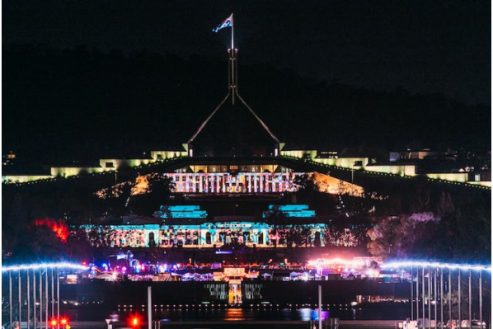

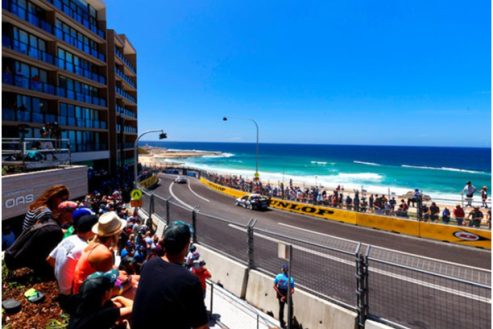


There were 600+ Artists from 30+ countries, 7 stages, over 4 days at this year’s WOMADelaide Festival, showcasing the best in music, arts and dance! Adelaide, South Australia. March 2023


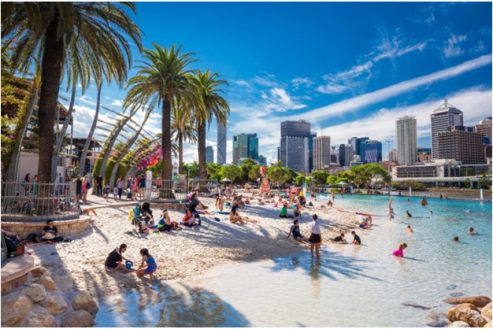
This Bulletin and its contents is for general information purposes only and should not be used as a substitute for consultation with professional advisors.
As legislation and travel requirements are constantly changing, we strongly recommend obtaining advice on your individual situation from a Registered Migration Agent. Please click here to book a consultation with one of our Registered Australian Migration Agents, located in Australia.






You can manage your membership and billing method by clicking here
Terms of Service
Privacy Policy
Copyright © 2025 Office of Immigration Australia, a private company registered in Australia. All Rights Reserved.